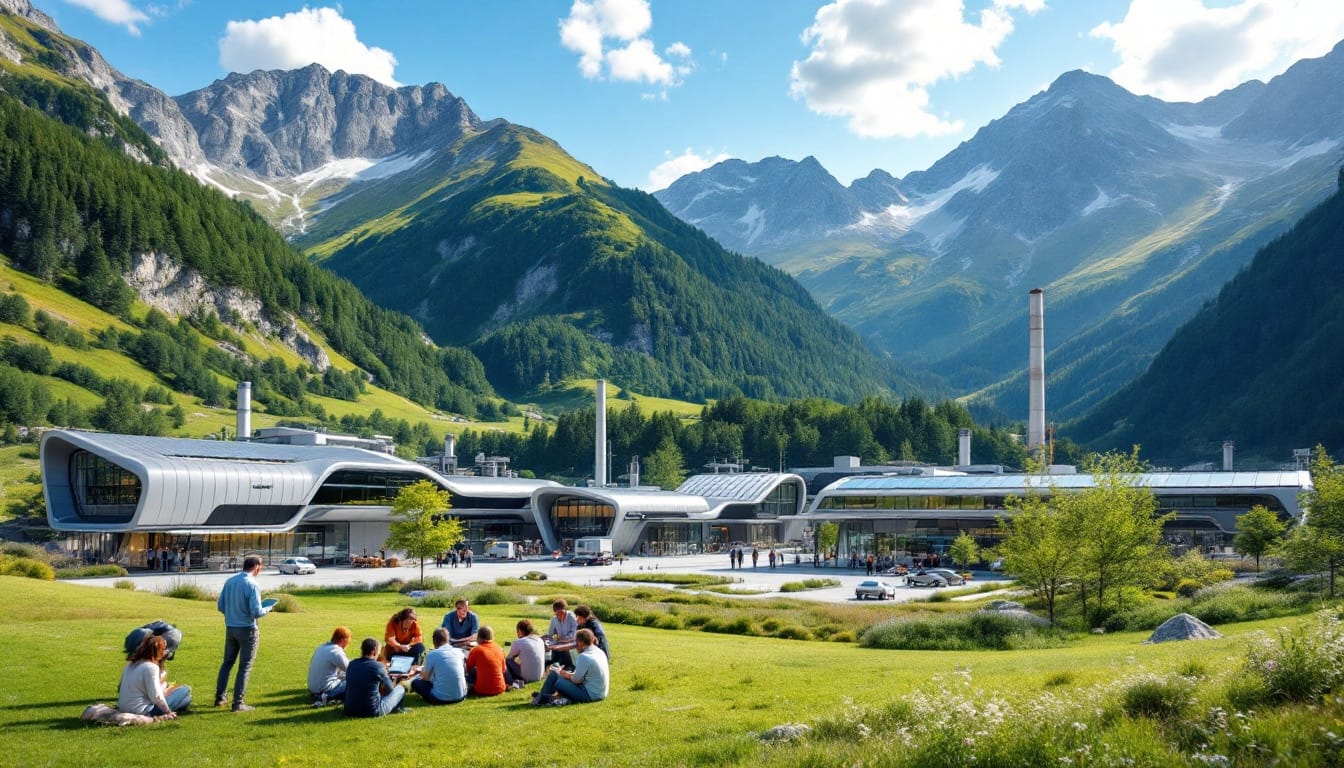“`html
Your online experience deserves to be smooth and secure.When anomalies occur, they can be disruptive.Understanding and solving these issues is essential for optimal browsing.
Discover how a simple check of your connection can restore access to your favorite site. If your activity is interpreted as that of a robot, disabling any potential anonymous proxy can often resolve the problem. If the error persists, feel free to contact customer service by providing the corresponding incident number: 3ed9fdbd-cy3y-42eb-b8a9-bffcdc765202. In the meantime, you can continue your browsing by confirming the checkbox “I am human”.
“`html
Table des matières
ToggleIntroduction to Industrial Renewal in Haute-Savoie
Haute-Savoie is an emblematic region in France, recognized for its industrial dynamism and innovative spirit. In the era of digital transformation and industry 4.0, the industrialists of Haute-Savoie are in full quest for renewal to remain competitive in global markets. This article explores the initiatives, challenges, and successes of these players shaping the industrial future of the region.
What are the main industrial sectors in Haute-Savoie?
Haute-Savoie is home to a variety of industrial sectors, ranging from aerospace to , through microtechnology and precision machine manufacturing. These industries are characterized by high added value and a focus on innovation. For example, companies like Airtel Ericsson collaborate with giants like Volvo Group to propel industry 4.0 through advanced 5G in India, demonstrating the region’s commitment to cutting-edge technologies.
The microtechnology sector particularly represents local expertise, combining traditional know-how with advanced digital technologies. These companies invest heavily in research and development to maintain their position in the international market and meet growing demands for quality and performance.
How are industrialists in Haute-Savoie integrating digital transformation?
The integration of digital transformation is crucial for industrialists in Haute-Savoie who wish to modernize their processes and improve efficiency. The adoption of cyber-physical systems and cloud technologies allows for better operational management, predictive maintenance, and resource optimization. According to a recent survey, digital transformation is bringing industry 4.0 closer, but industrialists still face obstacles such as a lack of specialized skills and high initial investments.
To overcome these challenges, many companies collaborate with digital transformation consultants who assist them in implementing tailored solutions. For instance, the collaboration between Airtel Ericsson and Volvo Group illustrates how technological innovation can be used to enhance competitiveness and foster a more agile and responsive production environment.
What are the current technological and industrial challenges?
Industrialists in Haute-Savoie face several challenges to maintain their growth and competitiveness. Among these, the integration of new technologies and data management play a crucial role. Companies must also navigate a complex regulatory landscape and meet growing environmental requirements. Technological issues include securing embedded systems and protecting against cyberattacks, an area where the region excels thanks to its advanced research centers.
Furthermore, the European industry faces major industrial challenges, particularly regarding innovation and competitiveness. The technological and industrial missions at the heart of Europe help to address these challenges by promoting collaboration and knowledge sharing. The missiles technological challenges and industrial challenges illustrate the efforts made to strengthen Haute-Savoy’s position in the international context.
How do local companies collaborate to innovate?
Collaboration between companies and institutions is essential to stimulate innovation in Haute-Savoie. Public-private partnerships, industrial clusters, and technology incubators play a key role in creating a favorable ecosystem for innovation. These initiatives allow for resource sharing, idea exchanges, and developing joint projects that meet market needs.
For instance, initiatives like Airtel Ericsson and Volvo Group demonstrate how collaboration between major companies can accelerate the adoption of advanced technologies such as 5G, paving the way for new industrial opportunities. Additionally, training and skills development programs are implemented to ensure that employees have the necessary knowledge to utilize new technologies.
What are the recent successes of industrialists in Haute-Savoie?
The industrialists of Haute-Savoie have recently achieved remarkable successes that showcase their ability to innovate and adapt. One notable example is the development of advanced embedded systems, which have significantly improved the performance of products and services offered. These innovations contribute not only to the economic growth of the region but also reinforce its reputation in international markets.
Another important success is the adoption of cloud technologies, which has allowed for better data management and greater operational flexibility. Local companies have also managed to overcome obstacles related to digital transformation by investing in training and collaborating with industry experts. Furthermore, the manufacturers podcast highlights winning leaders and pioneers of industry 4.0 in Haute-Savoie, illustrating the region’s ongoing commitment to innovation and industrial excellence.
What obstacles must be overcome for successful transformation?
Despite the numerous advantages of digital transformation, industrialists in Haute-Savoie encounter several obstacles that hinder their progress. Among these challenges, funding for innovation projects remains a major issue. The investments needed to adopt new technologies can be high, and not all companies have sufficient financial resources.
Moreover, the shortage of specialized skills presents a significant barrier. It is crucial to train employees in new technologies to ensure the effective implementation of digital solutions. Another important obstacle is resistance to change within organizations, where some traditional structures may hinder the adoption of new working methods.
To overcome these challenges, companies must adopt a strategic approach to change management, invest in continuous training, and seek partnerships with academic institutions and digital transformation consultants. For example, by disabling anonymous proxies and ensuring secure browsing, companies can minimize the risks related to cybersecurity, thus ensuring a smoother and more secure transformation.
In case of technical difficulties, it is recommended to contact customer service by mentioning the appropriate incident number for quick assistance. In the meantime, users can continue their browsing by confirming their humanity through the available options, ensuring the continuity of operations without interruption.
What are the future prospects for industry in Haute-Savoie?
The future prospects for industry in Haute-Savoie are promising, with a clear focus on innovation and sustainability. The continued adoption of digital technologies and the rise of industry 4.0 will create new opportunities for local companies, allowing them to position themselves as leaders in international markets. Investments in research and development, coupled with strong collaboration among industrial players, will stimulate economic growth and foster the emergence of new business models.
Additionally, the emphasis on sustainability and environmentally friendly practices will contribute to creating a greener and more responsible industry. Initiatives aimed at reducing carbon footprints and optimizing the use of natural resources will be at the heart of future development strategies. Furthermore, advancements in the field of artificial intelligence and the Internet of Things (IoT) will enable increased automation and better management of industrial processes.
Finally, companies in Haute-Savoie will continue to adapt to the changes in the global market by exploring new sectors and diversifying their activities. This ability to adapt and innovate is essential to maintain competitiveness and ensure the sustainability of the local industry in a constantly evolving environment.





